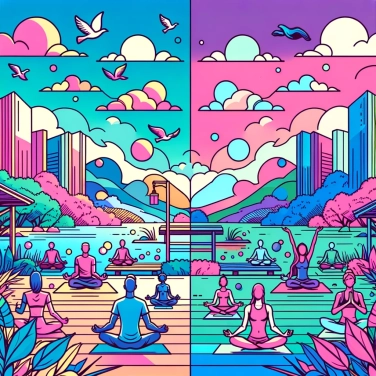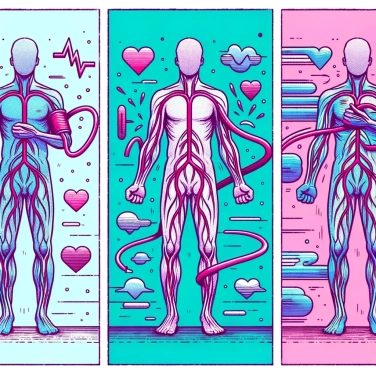In detail, for those interested!
Effect of gravity on blood circulation
When the human body is in an upright position, gravity has a significant influence on blood circulation. Indeed, blood tends to be pulled downwards, leading to an accumulation of blood in the blood vessels of the lower limbs. This phenomenon is often referred to as the redistribution of blood volume.
Blood pressure varies depending on the height of the body in relation to the heart. In an upright position, blood pressure is higher in the vessels of the legs than in other parts of the body. This difference in pressure can lead to circulation problems, such as swelling in the lower limbs.
To counteract the effects of gravity on blood circulation, the human body has developed sophisticated regulatory mechanisms. For example, the muscles in the legs act as pumps that help push blood back towards the heart. Additionally, blood vessels contract and dilate to maintain stable blood pressure despite changes in position.
In summary, the effect of gravity on blood circulation is a crucial aspect to consider in understanding the functioning of the cardiovascular system. The physiological adaptations of the human body help maintain adequate blood pressure and effective blood flow, regardless of body position.
Blood pressure regulation mechanisms
Blood pressure is regulated by a complex set of physiological mechanisms aimed at maintaining the necessary balance to ensure optimal functioning of the body. Among these mechanisms, we find the autonomic nervous system, composed of the sympathetic and parasympathetic nervous systems, which act on heart rate and the strength of heart contraction, thus influencing blood pressure.
The renin-angiotensin-aldosterone system is another key player in the regulation of blood pressure. This hormonal system regulates the amount of salt and water in the body, thus influencing blood volume and blood pressure. Angiotensin II, a vasoconstrictor hormone, increases blood pressure by reducing the diameter of blood vessels.
The kidneys also play a crucial role in blood pressure regulation by controlling the amount of water and salt eliminated in urine. When blood pressure is too low, the kidneys stimulate the production of renin, leading to an increase in blood pressure.
Finally, the baroreceptor system, made up of pressure sensors located in blood vessels and the heart, reacts to changes in pressure by adjusting heart rate and blood vessel contraction to maintain blood pressure within normal limits.
These different regulation mechanisms work together to ensure a stable blood pressure adapted to the needs of the body, thus allowing optimal functioning of all organs and tissues.
Vascular adaptations in standing versus lying position
When standing, the blood vessels in the legs have to fight against gravity to pump blood back to the heart, which can lead to an increase in blood pressure in the lower limbs. To counteract this effect, the human body implements several adaptation mechanisms. The veins in the lower limbs have valves that prevent blood from flowing back too quickly. Additionally, the leg muscles act as pumps by contracting to help propel blood upwards.
When lying down, gravity does not influence the blood circulation in the lower limbs as much. The blood vessels can dilate more, reducing resistance to blood flow and helping to maintain lower blood pressure. This allows the body to better balance the distribution of blood throughout the body.
Vascular adaptations based on body position help maintain stable blood pressure and ensure a good supply of oxygen and nutrients to all organs, regardless of our position.
![Explain why some countries change time zones?]()
![Explain why chilling the butter before working it into puff pastry dough ensures a better texture.]()
![Explain why Alexander the Great refused to wear shoes.]()
![Explain why Alexander the Great always wore an impressive helmet.]()





















